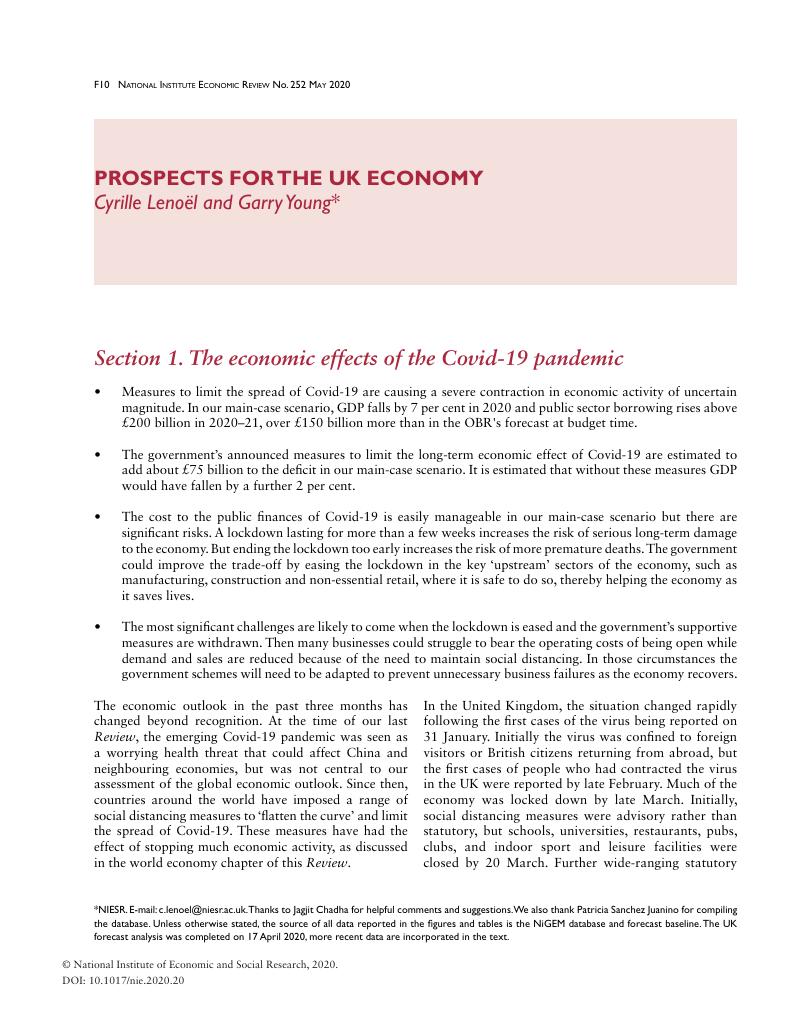Crossref Citations
This article has been cited by the following publications. This list is generated based on data provided by Crossref.
Chronopoulos, Dimitris K.
Lukas, Marcel
and
Wilson, John O. S.
2020.
Consumer Spending Responses to the COVID-19 Pandemic: An Assessment of Great Britain.
SSRN Electronic Journal,
Bhattacharjee, Arnab
and
Lisauskaite, Elena
2020.
COVID-19 IMPACTS ON DESTITUTION IN THE UK.
National Institute Economic Review,
Vol. 253,
Issue. ,
p.
R77.
Victor, Vijay
Karakunnel, Joshy Joseph
Loganathan, Swetha
and
Meyer, Daniel Francois
2021.
From a Recession to the COVID-19 Pandemic: Inflation–Unemployment Comparison between the UK and India.
Economies,
Vol. 9,
Issue. 2,
p.
73.
Thomas, D. Gareth
and
Bywaters, David S.
2021.
The Creators of Inside Money.
p.
195.
YILDIRIM, Yıldırım
2021.
COVID-19’un İktisadi Yaşama, Siyasi Alana ve Topluma Etkileri: Kapsamlı Bir Değerlendirme.
Sosyoekonomi,
Vol. 29,
Issue. 50,
p.
277.
Chadha, Jagjit S.
Küçük, Hande
and
Pabst, Adrian
2021.
COMMENTARY: PROPOSALS FOR A NEW FISCAL FRAMEWORK.
National Institute Economic Review,
Vol. 256,
Issue. ,
p.
1.
Bhattacharjee, Arnab
Pabst, Adrian
Szendrei, Tibor
and
Hewings, Geoffrey J. D.
2024.
NiReMS: A regional model at household level combining spatial econometrics with dynamic microsimulation.
Spatial Economic Analysis,
Vol. 19,
Issue. 3,
p.
436.
Lefebvre, Vivien
2024.
Navigating challenges: lean inventory management and SMEs performance during the COVID-19 crisis and beyond.
Small Business Economics,
Lefebvre, Vivien
and
Osei-Tutu, Francis
2024.
Better-prepared to face COVID-19: Organizational learning from SMEs’ experience with banking crises.
Journal of Small Business Management,
p.
1.
Ikefuji, Masako
Magnus, Jan R
and
Yamagata, Takashi
2024.
Revealing priors from posteriors with an application to inflation forecasting in the UK.
The Econometrics Journal,
Vol. 27,
Issue. 1,
p.
151.



